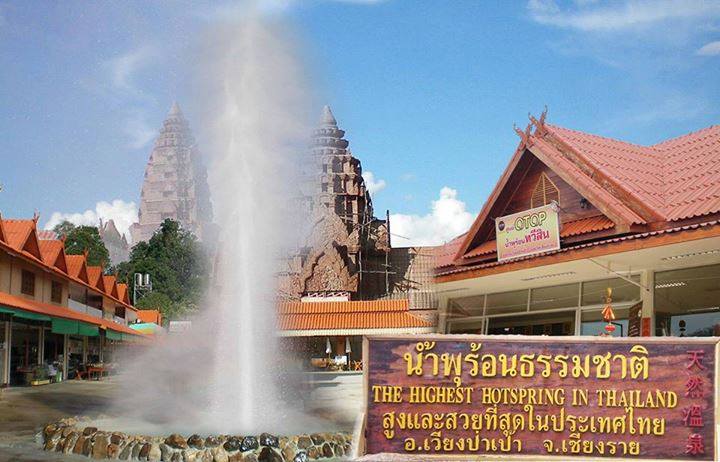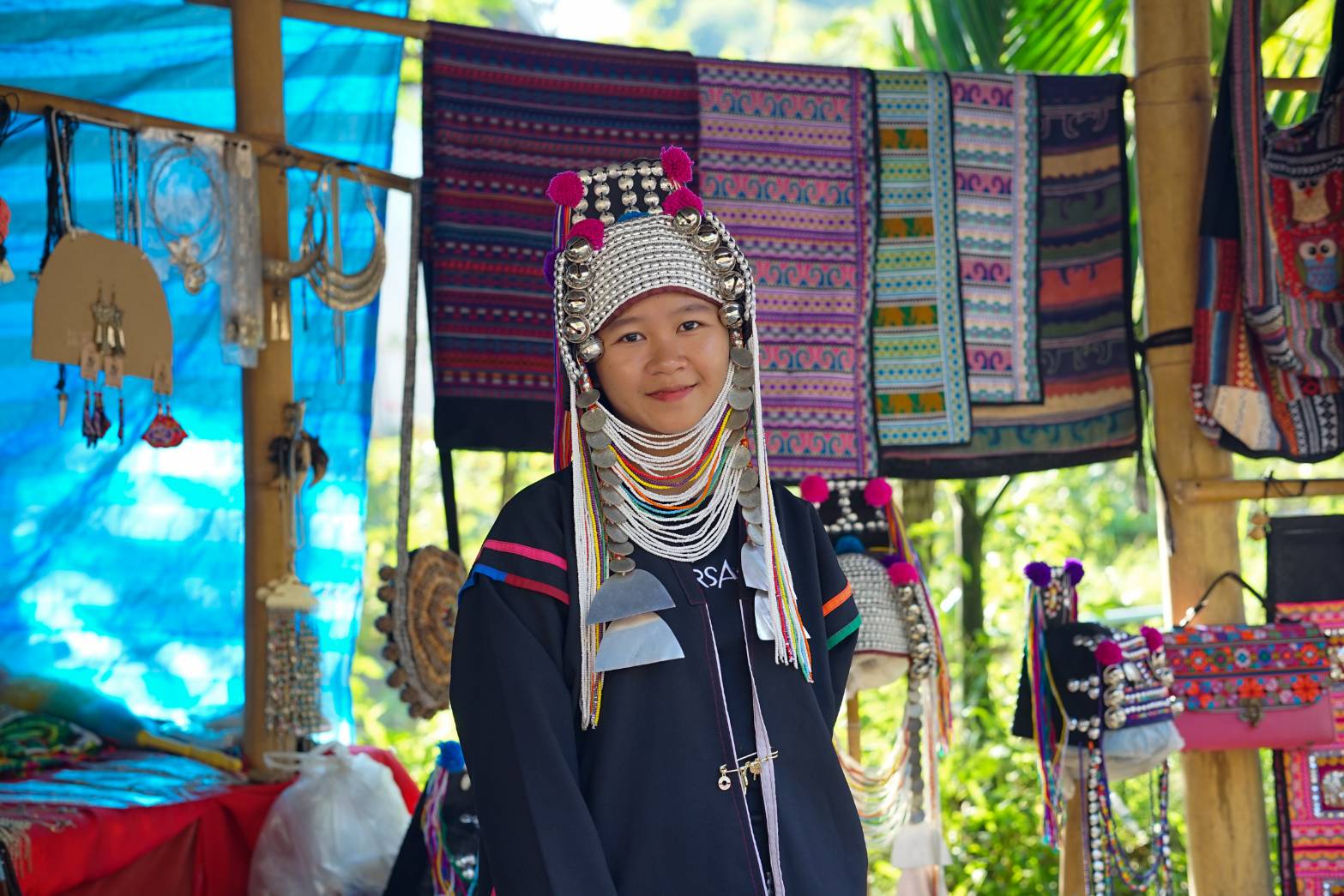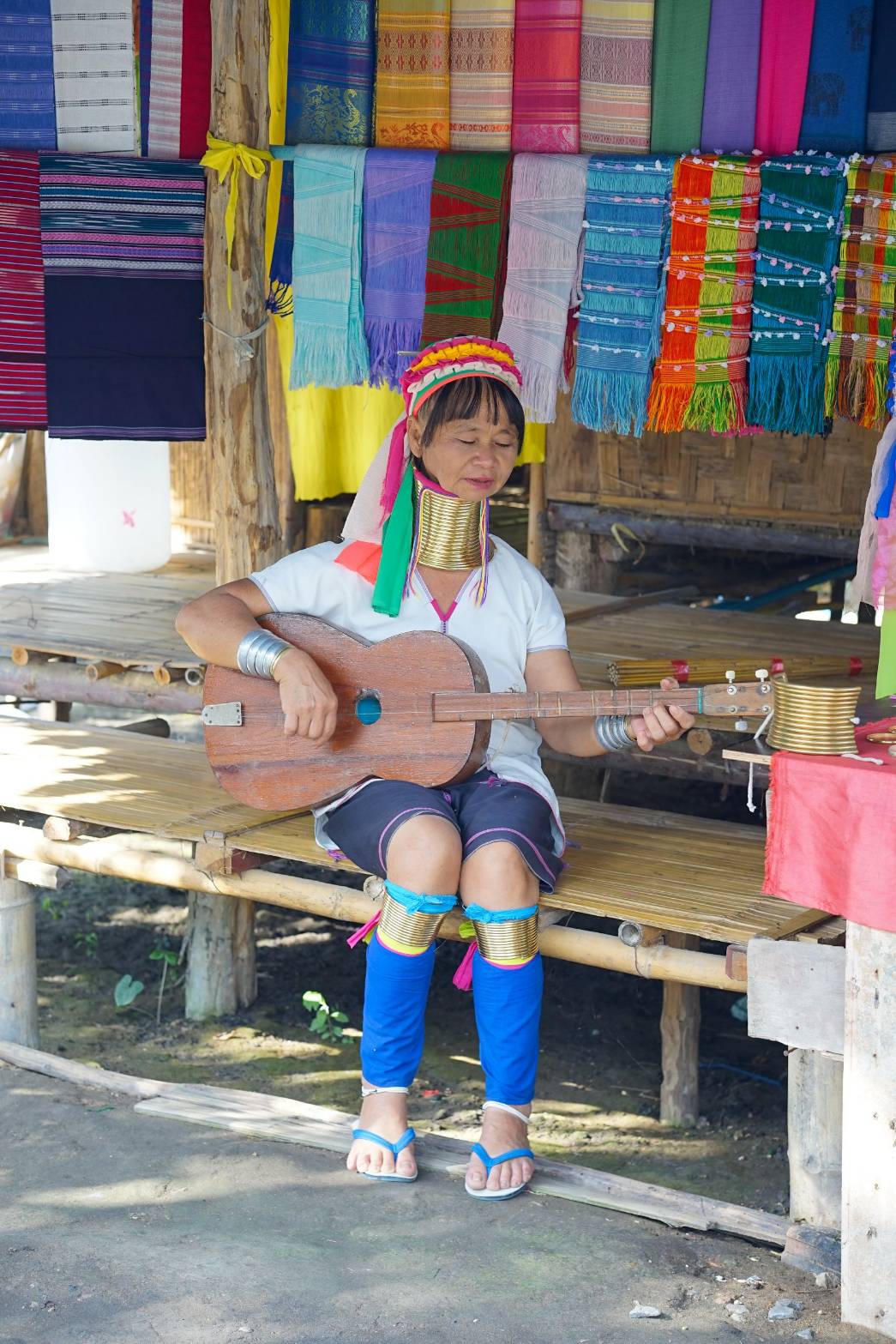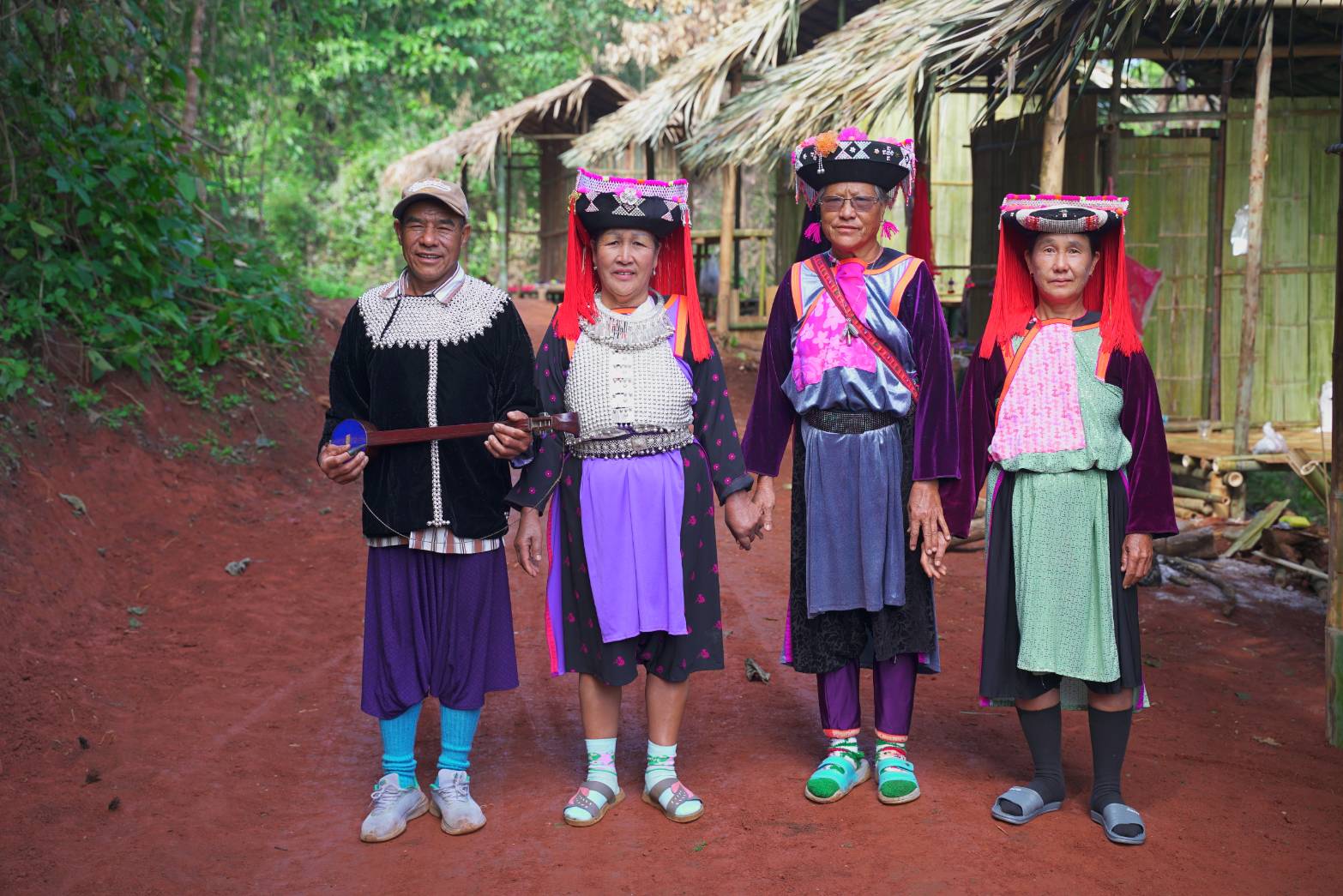Mae Khachan Hot Springs
Mae Khachan Hot Springs is in Wiang Pa Pao, Chiang Rai. The thermal waters can be experienced at a number of locations in this district, but for the onward traveler this means right next to the main Chiangmai- Chiangrai Highway 118 (on both sides of the road).
Most tour operators will describe this as an attraction, but to be honest your driver needs a break half way to Chiang Rai, and will stop whether you want to or not!


As long as you have reasonable expectations, this is quite a fun place to stop. There are hot water geysers, and seating areas so you can bathe your feet in the hot water. You can buy baskets of chicken or quail eggs to boil.
There are trinkets and souvenirs for sale of course, but you can also find some local fruit. Chiang Rai is famous for a pineapple cultivar with small-sized fruit (great if someone else cuts it!) and lychees – the hot springs markets will definitely have pineapple in season.
More importantly you can stretch your legs. There are restrooms, and convenience stores if you need to restock drinks or snacks.




















Hill Tribe Villages in Chiang Rai
Ban Lorcha Akha hill tribe village Mae Kachan in Chiang Rai
There are hundreds of Hill tribe villages in Chiang Rai. The Karen, Akha, Hmong, Lahu, Lisu, Palong, and Mien (Yao) villages can all be found here. Chiang Rai is a melting pot of different hill tribe groups making it the perfect place to discover authentic hill tribe culture, and traditional hill tribe life.
Chiang Rai’s proximity to China, Laos and Myanmar, means that historically, the hill tribes crossed over the borders to settle in the highland areas of Chiang Rai. Some settled here in search of arable land for farming, whilst others fled persecution in their native lands. The result is that Chiang Rai is a melting pot of ethnic minority groups (hill tribes) and their villages are scattered throughout the province. The different hill tribes live harmoniously together, and it’s common to find different groups and their villages located in close proximity to one another.
The size and nature of villages in the area varies enormously. From villages with only a small number of families that have little to no electricity tucked away in deep forest, to larger villages with modern infrastructure such as paved roads and WiFi located near main roads.
Palong Hill tribe Girls
There are a few hill tribe villages in Chiang Rai which have been set up for the purposes of tourism. These allow visitors to have a brief insight into hill tribes if they only have a short amount of time in the area. Some of these villages will be more commercial in feel, offering nothing in the way of cultural learing. And others can be more educational. Either way these villages provide an important livelihood and income for its members, and serve as a way to preserve ethnic traditions and culture.
Akha Villages in Chiang Rai
Ban Lorcha is an Akha hill tribe village located in Mae Salong. It was originally set up in the 1970’s , by local Akha villagers in response to the growing number of tourists arriving at their village, wanting to look around and curious about Akha culture. With the help of a local organisation, the villagers decided to take management of the situation, and form a model village whereby tourists could visit and learn about Akha hill tribe culture, as part of an organised visit. Today at Ban Lorcha, there are village guides who accompany visitors around the villages, showing them different aspects of village life from traditional houses, and an organised trip there includes demonstrations of traditional Akha life, such as traditional hunting techniquies, dancing and weaving.
Hmong Villages in Chiang Rai
There are numerous Hmong villages in Chiang Rai, if you are lucky you may see the Hmong women carrying out traditional embroidery which are colourful cross-stitch like patterns on black material. Hmong villages can also be identified as they have wooden houses built on the ground and unlike other tribes their houses are not on stilts.
Lahu Villages in Chiang Rai
The Lahu can also be found in Chiang Rai. Their villages tend to be more primitive in nature compared to other tribes. They live in stilt bamboo houses and their villages are more likely to have dirt paths rather than paved roads. From our experience, breaking-the-ice as a visitor seems to be the most difficult in Lahu villages, making it even more important to travel with a local hilll tribe guide here.
Non-Touristic Hill Tribe Villages
The entire countryside of Chiang Rai is scattered with ‘real’ hill tribe villages, where hill tribes and locals are living everyday life uninterrupted by tourism, most of them forging a livelihood as farmers or engaged in agriculture of some form. The nature and size of villages can vary enormously. From villages tucked away in remote forests with only a small number of families that have little to no electricity, to larger and easily-accesible villages with modern infrastructure such as paved roads and WiFi. It’s going to be tricky for anybody who’s not local to the area, to know which villages are good to visit. A local guide can also make recommendations on what villages, which hill tribes and where they are located.
Tour Included
-
Hotel pick up
-
Travel accident insurance
-
English speaking guide
-
Entrance fees
-
Solf Drink
-
The exact pick-up time will be confirmed by email after you have made the booking.
- Please plan to meet your driver at your hotel lobby at least 10 minutes prior to the sc Read more
Duration Private Tour(minimum 2 pax) Moring Aftenoon Price 2,500 baht per/person 08.00-12.00 13.00-16 .00





